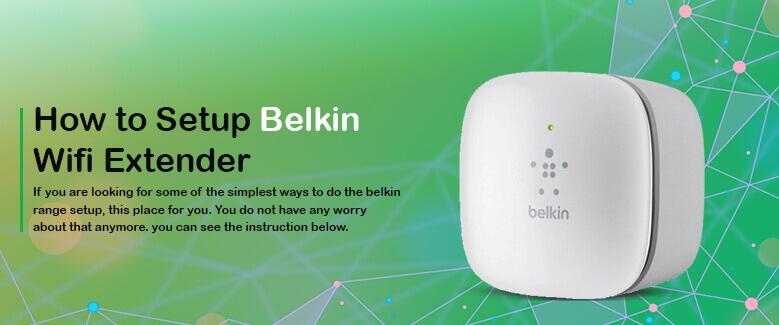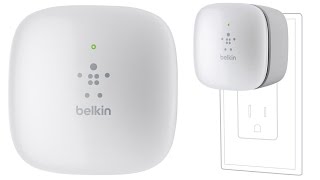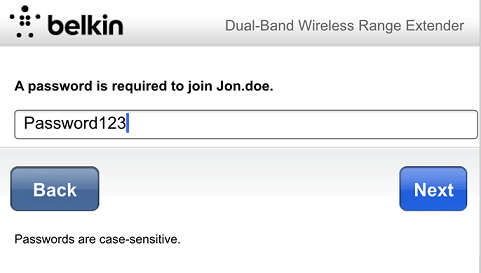belkin.range login | Belkin Extenders Setup | Belkin range setup

What is http://belkin.range?
http://belkin.range is a web address (URL) that is likely associated with Belkin, a company known for its networking and connectivity products like routers and wireless range extenders. When you type http://belkin.range into a web browser, it’s often used to access the settings and configuration page for a Belkin router or range extender. This page allows you to setup and manage your networking devices, including tasks like changing the Wi-Fi network name (SSID), setting up security features like passwords, and managing connected devices.
Belkin Range extenders are used to improve the signal strength of your existing Wi-Fi network. They work by amplifying the signal from your router and repeating it, allowing you to extend the range of your network to areas where the signal is weak or nonexistent. Belkin offers a variety of Wi-Fi range extenders, with different speeds, features, and prices to suit your needs.
http://belkin.range : How to Setup Belkin Range Wizard?
Setting up a Belkin.Range Wizard can be done through two main methods: the Quick Setup Wizard or Manual Setup.
Now, it depends upon you which method you want to choose for this:-
Method 1:- Quick Setup Wizard:
- Connect the Range Extender: Plug your Belkin Range extender into a power outlet within a good range of your existing router’s signal. Wait for the lights to stabilize.
- Connect your Device: On your laptop, phone, or tablet, search for available Wi-Fi networks. Look for a network named “Belkin.setup” followed by three characters (usually the last three of the extender’s MAC address). Connect to this network without entering any password.
- Launch the Setup Wizard: Open your web browser and type http://belkin.setup or http://192.168.2.1 in the address bar. This should launch the Belkin Range Wizard.
- Follow the prompts: The wizard will guide you through the setup process, which typically involves selecting your existing Wi-Fi network, entering your network password, and choosing a name and password for your extended network.
- Connect to your new network: Once the setup is complete, you can disconnect from the “Belkin.setup” network and connect to your newly extended network using the name and password you chose.

Method 2 :- Manual Setup:
- Connect the Range Extender: Same as step 1 in the Quick Setup Wizard.
- Connect your Device: Similar to step 2, connect to the “Belkin.setup” network without a password.
- Access the extender settings: Instead of going through the web browser, you can use the Belkin Range or Belkin Setup app (available for Android and iOS) or press the WPS button on both your extender and router (if both devices support WPS).
- Configure settings: Follow the on-screen instructions or app prompts to manually configure your extender’s network name, password, and connection to your existing router.
- Connect to your new network: As in the Quick Setup, disconnect from the “Belkin.setup” network and connect to your extended network using the chosen name and password.
- Make sure your router is broadcasting both 2.4GHz and 5GHz bands if you want your extender to support both.
- Choose a location for your extender that is within good range of your router’s signal but also covers the area where you need better coverage.
- If you encounter any issues during setup, consult the user manual or online troubleshooting resources for your specific Belkin model.
Why Your Belkin Range is Not Working?”
Your Belkin range might not be working for a few reasons, like a little hiccup in its connection or something blocking its signal. Here are some simple things to check:
- You might have typed the web address incorrectly. Just check whether you’ve entered it exactly as it should be: http://belkin.range.
- Check if your device is connected to the internet. If your internet connection is down, you won’t be able to access the page.
- Try accessing http://belkin.range using a different web browser. Sometimes, browser settings or extensions can interfere with accessing certain websites.
- Clear your browser’s cache and cookies. This can sometimes resolve issues with accessing certain web pages.
- Sometimes a quick restart can do the trick. Turn off the extender and router, wait a minute, then turn them back on again.
- If you’re still stuck, there’s always Belkin customer support. They’re happy to help get your range up and running again.

How to Reset Belkin Range Extender?
There are two ways to reset your Belkin range extender: using the reset button or through the web interface.
Reset Button:
- Find the reset button. It’s usually a small hole on the back or bottom of the extender. You might need a paperclip or something pointy to press it.
- Hold the button for at least 10 seconds. The extender’s lights will blink while it’s resetting.
Wait for the lights to stop blinking and stay solid. This means the reset is complete.
Web Interface
- Connect your device (like a laptop or phone) to the extender’s Wi-Fi network. It’ll be something like “Belkin.setup” followed by some letters and numbers.
- Open a web browser.
- Type http://192.168.2.1 in the address bar. This is the default address for Belkin extenders.
- The username is usually “admin” and the password is blank
- Click on “Utilities” or “Settings”.
- Click on “Restore Factory Defaults”.
- Click “OK” to confirm.
Why Belkin Range Extender Flashing Orange Color?
A flashing orange light on your Belkin range extender is a sign that something’s not quite right with its connection. Don’t worry, it’s usually an easy fix!
Here are the most common reasons why your Belkin range extender might be flashing orange:
- The extender might be too far away from your router to get a strong signal. Try moving it closer, ideally within 10-15 feet.
- Belkin Range Extender too far from router
- Your router itself might be having problems. Try restarting it by unplugging it for 30 seconds and then plugging it back in.
- Thick walls, furniture, or even other electronic devices can interfere with the Wi-Fi signal. Try moving the extender to a more open location.
- Belkin Range occasionally releases firmware updates that can improve your extender’s performance and fix bugs. Check the Belkin website to see if there’s an update available for your model.
- In rare cases, the orange light could indicate a hardware problem with the extender itself. If you’ve tried all the troubleshooting steps above and the light is still flashing, contact Belkin support for further assistance.
Why re.rockspace.local is not working?
To fix this:
- Check Placement: Make sure the range extender is near enough to the router for a strong signal.
- Adjust Settings: Double-check the setup and settings of the range extender to ensure it’s properly connected to the network.
- Reset the Range Extender: If the issue persists, reset the range extender to its factory settings and set it up again.
If these steps don’t work, it’s best to contact Belkin’s customer support for help or to see if there’s a hardware problem with the device.
In conclusion, Belkin Range extenders are valuable devices for improving Wi-Fi coverage in your home or office. With their easy setup process and troubleshooting tips, they offer a convenient way to enhance your wireless network’s reach. Whether you opt for the Quick Setup Wizard or Manual Setup, ensuring a strong connection to your router is key. If you encounter issues, simple checks like power and connection verification can often resolve them. And if all else fails, the reset options provide a way to start fresh. By understanding these basics, you can make the most of your Belkin range extender and enjoy better Wi-Fi coverage where you need it most.
How do I know if my Belkin WiFi extender is working?
You can detect if your Belkin Wi-Fi extender is working by checking the LED status lights on the device. If the extender is properly connected to your network and functioning, the LED lights should indicate its status. Additionally, you can test the Wi-Fi signal strength in areas where the extender is meant to boost coverage to see if there’s an improvement in connectivity.
How do I reset my Belkin Wi-Fi password?
To reset your Belkin Wi-Fi password, you can follow these steps:
- Access the router’s settings: Open a web browser and enter your router’s IP address in the address bar. The default IP address for Belkin routers is usually 192.168.2.1.
- Log in to the router: Enter the router’s username and password when prompted. The default credentials for Belkin routers are typically “admin” for both the username and password, unless you’ve changed them previously.
- Navigate to the wireless settings: Once logged in, look for the wireless settings or Wi-Fi settings section in the router’s configuration interface.
- Change the Wi-Fi password: Locate the option to change the Wi-Fi password or network key. Enter a new password in the provided field.
- Save the changes: After entering the new password, save the changes to apply the new Wi-Fi password to your Belkin router.
- Reconnect devices: Once the new password is saved, you’ll need to reconnect all your devices to the Wi-Fi network using the updated password.
Belkin.range : How to Setup Belkin N300?
To set up your Belkin Range Extender N300, follow these steps:
- Connect to the extender: On your device (computer, phone, or tablet), connect to the Wi-Fi network named “Belkin.setup” followed by three characters (usually the last three of the extender’s MAC address).
- Access the setup page: Open a web browser and enter “http://belkin.range” or “http://192.168.206.1” in the address bar.
- Configure the extender: Follow the on-screen instructions to select your existing Wi-Fi network and enter its password. You can also choose a name and password for the extended network.
- Complete the setup: Once the setup is complete, disconnect from the “Belkin.setup” network and connect to your newly extended network using the new name and password.
- Position the extender: Place the extender in an optimal location where it can amplify the Wi-Fi signal effectively.
- Test the connection: Verify that your devices can now connect to the extended network with improved signal strength.